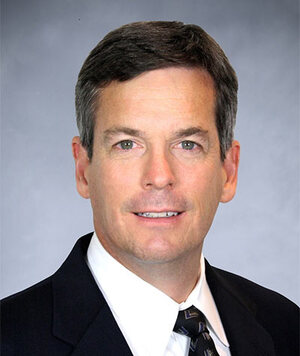CommScope recently announced the market’s first 204 MHz digital return solution, which allows operators to achieve symmetrical gigabit speeds. The new solution is comprised of the CommScope DT4600N node transmitter and DR3600N headend receiver and builds on a number of successful, industry-leading digital return solutions. Like these previous CommScope digital returns, this one is configurable, enabling operators to start with modes that support 5-85 MHz mid-splits and then, with a touch of a button, transition to 5-204 MHz high-splits. This creates a natural upgrade path that offers immediate results today while scaling seamlessly to tomorrow’s network needs.
This level of flexibility is important, in light of the recent evolution in subscriber behaviors and expectations. Last spring, when maximum upstream speeds leaped by 30% or more in the wake of the pandemic, most networks were able to adapt quickly to address the new demand. However, upstream demands have continued to grow—increasing by more than 50% since March. More importantly, this uptick is not temporary. These short-term behavior adjustments have established long-term habits that are unlikely to fade, even when our lives return to something more familiar. The pandemic has both increased broadband data use and accelerated technology adoption in the mass market.
For MSOs, this signals a new impetus to accelerate network evolution. While short-term fixes such as node segmentation—which reduces the number of subscribers sharing bandwidth—helps to improve capacity, it won’t increase the maximum speed of the upstream connection. To increase speed, operators must improve signal modulation or expand bandwidth capacity. For a moderate speed increase, modulation will help. This is something supported, for example, by the transition from DOCSIS 3.0 to 3.1. But in order to accommodate more significant data rate increases, upstream bandwidth must grow. In North America, most operators use 5-42 MHz or 5-85 MHz upstream bandwidth, and with the advance to high-splits in the upstream, they will achieve gains of up to four times the original speeds.
204 MHz Upstream: DT4600N Node Transmitter and DR3600N Headend Receiver
The CommScope 5-204 MHz digital return enables these next-generation upstream bandwidth increases, but it also provides the many benefits of a class-leading digital return—including consistent RF performance over varying distances or temperatures, broad dynamic range, and superior multi-wavelength performance. The digital return encodes the analog RF signal digitally so that, during transmission, it maintains the same RF performance when it is reconstituted during the digital-analog conversion, avoiding the decrease in RF power and NPR performance associated with analog returns of longer distances with lowered optical return power levels.
Digital transmission is also inherently more tolerant of noise than analog signals, enabling lower optical signal levels, longer data links, and a greater number of return wavelengths on the same fiber. This allows operators to avoid the expense and delays associated with installing additional return fibers in the cable plant. CommScope’s new solution builds on the proven benefits of the widely-deployed CommScope digital return solutions—including immunity to clipping, integrated node monitoring communications, and wide dynamic range levels that enable simple ‘set-and-forget’ link alignment. All the field-proven advantages of CommScope’s leading digital returns apply to the new 5-204 MHz solution.
High-split solutions like CommScope’s 5-204 MHz digital return help operators maintain their competitive advantage and maximize investment returns. They enable gigabit symmetrical services to compete with other technologies while leveraging existing RF drops. With the continued growth in network demand, operators need to begin upgrading the HFC Plant to stay ahead of the curve and continue delivering competitive levels of service.
Please reach out to the CommScope team to find out how the industry’s only 204 MHz digital return can help you future proof your network.












